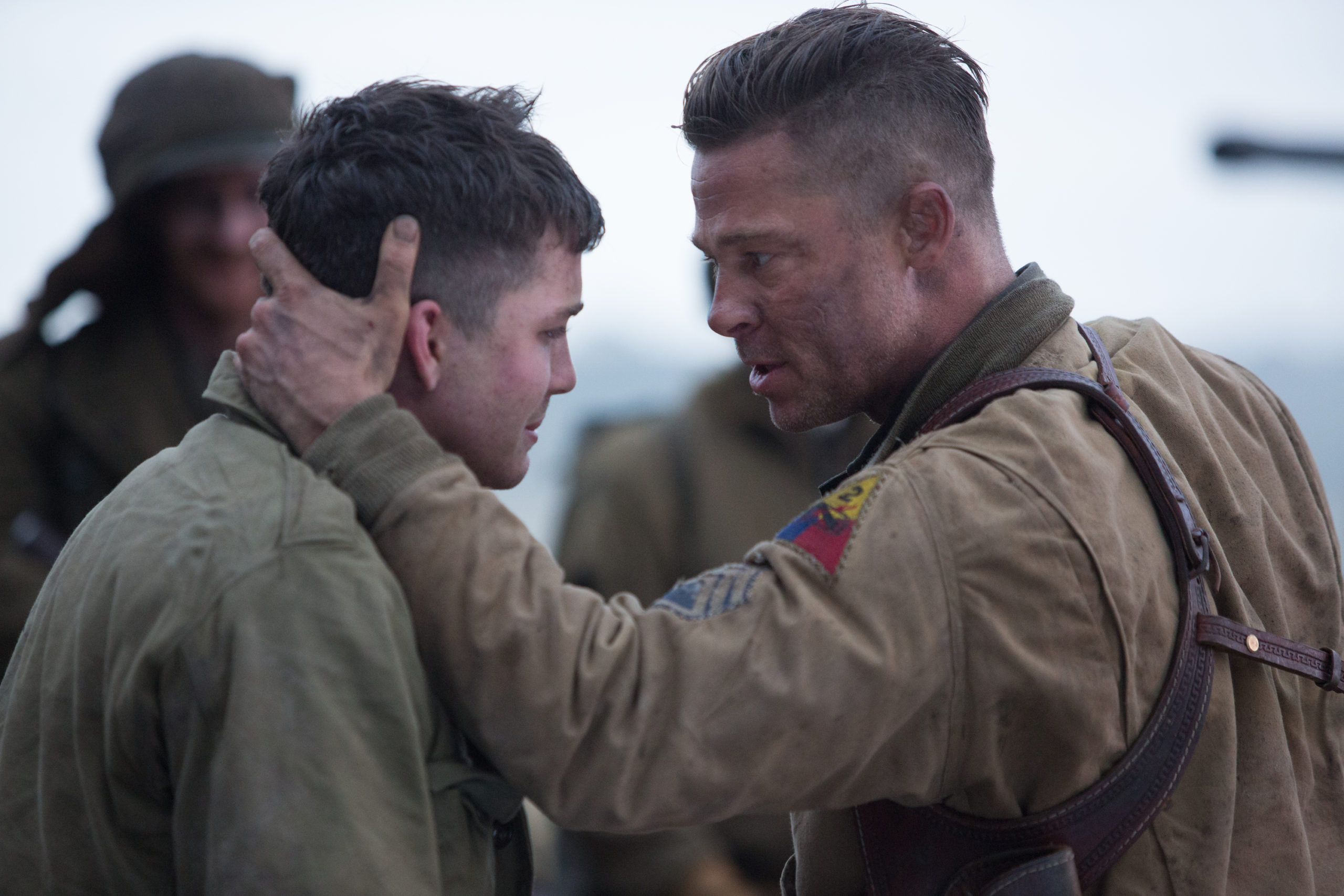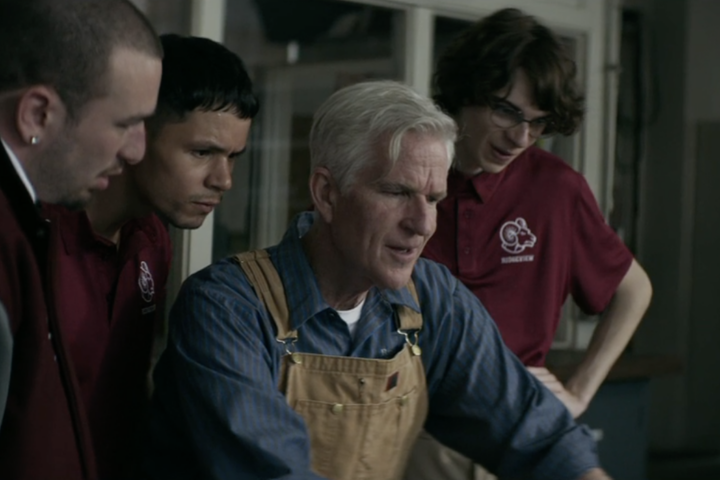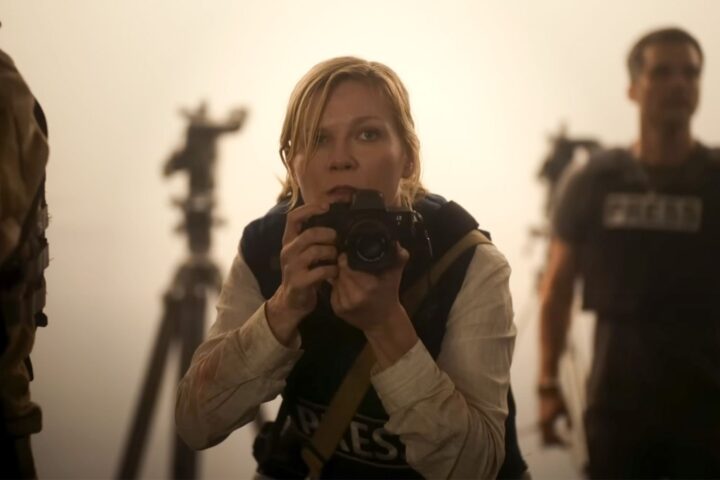The aptly titled new war picture Fury, starring Brad Pitt as an American sergeant leading a band of GIs through Germany at the close of the World War II, is a machine of a movie that storms both the battlefields and the emotions. Fashioned by writer-director David Ayer as visceral, gripping actioner, Fury doesn’t quite break new ground, but nonetheless all but knocks you over with the blunt impact of a close-range missile. It’s an intense, gritty and wholly unsentimental war movie with a lot of conviction and one that pulls no punches.
It’s 1945 and the twilight of the war, and as allied forces trek the German countryside en route to Berlin, there’s death around every corner. Near defeat, a desperate Hitler orders ever man, woman and child to take up arms and resist the invaders; bloody combat, snipers, and land mines loom at ever turn.
Ayer’s film focuses on a small group of men largely stuck inside the tight quarters of a Sherman tank they’ve nicknamed “Fury,” painted on the barrel, commanded by sergeant Don “Wardaddy” Collier and including gunner Boyd “Bible” Swan (Shia LeBeouf), driver Trini “Gordo” Garcia (Michael Pena) and loader Grady “Coon-Ass”Travis (Jon Bernthal), a longtime crew focused on killing Nazis and who would rather die than be captured. Into their midst comes a military typist turned tank driver Norman Ellison (Logan Lerman), who is as determined not to be corrupted by the war as he is not to kill.
The stripped down narrative, when not focused on violent ambushes, confrontations and unexpected warfare, is keenly fixed on the details of Ellison’s loss of innocence, and Lerman, the gifted young star of The Perks of Being a Wallflower, charts every disillusionment across his sad baby face, a stark contrast to the battled-scarred battalion members he begrudgingly comes to respect.
This is especially apparent in the Fury’s centerpiece, a long, fascinating scene where Pitt and Lerman enter the apartment of two German women, cousins named Irma (Anamaria Marinca, star of the devastating 4 Months, 3 Weeks and 2 Days) and Emma (Alicia von Rittberg). Over the course of about twenty minutes, the scene moves from tension to domesticity to romance to tragedy, a respite of stillness and tenderness amidst the melee outside.
But then it’s back to the battle for two spectacular sequences, one involving two-tank warfare and the other, a powerful final half-hour where the men find themselves outgunned and surrounded by an SS battalion, their tank immobile and ammunition dwindling. Ayer, with cinematographer Roman Vasyanov, has delivered some of the most you-are-there battles scenes in the history of war movies, and that’s saying something.
Making maximum use of the tank’s claustrophobic quarters, Ayer puts the men in close proximity and lets their oppositional personalities clash, something he’s done in past pictures like the superb End of Watch, about two courageous L.A.P.D. officers fighting a different kind of war in equally dangerous territories.
Fury may not be original, but it does contain thrillingly staged action sequences and a few potent ideas about loyalties and camaraderie in the fog of war, some terrific acting, and a tense final half-hour. He knows his characters well and what are initially perhaps familiar archetypes become
The cast is down-the-line terrific, Pitt giving a star turn of coolness under pressure, effectively stoic; LeBeouf has real heart; Bernthal the embodiment of alpha swagger machismo; Pena suitably comic relief; and Lerman uncommonly sensitive.
What do we learn in Fury? Well, nothing too new – war is hell, there’s loyalty amongst a band of brothers and that the front is no place for illusions of innocence. And that a damned and exciting World War II picture, thrillingly shot, scored, and acted, is one of the season’s most memorable movies.
3 1/2 stars.



